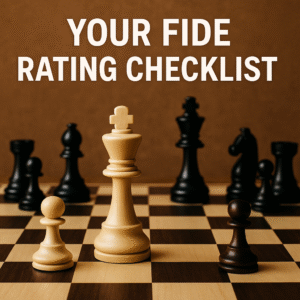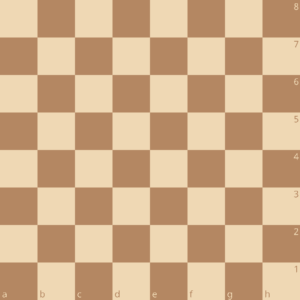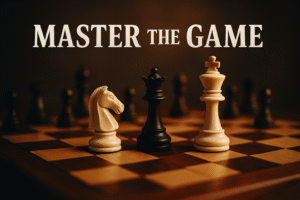A game of chess is a piece of story. It is pure art on a board. If a game is a story – then the opening is its gateway. Openings are as important as the plot in a story. And it is inevitable if you want to win games.
Chess openings are the phase of the game where the first 5-15 moves take place. By the end of this part – one may gain an advantageous position – or might already be in a losing position. A little advantage in the opening can significantly help in the middlegame and it increases the chances of winning as well. So, openings are super important.
They say, “Morning shows the day”.
I would say – “Openings show the result (mostly)” – in context of chess.
Now you understand the importance of the opening – and you must master them.
But there are thousands of chess openings available. Is it possible to master all of them?
Well, it may not be possible. I won’t argue with you on that.
Thus comes the concept of opening principles. Let’s call it the Foundation of Chess Openings.
Let me tell you my story. Back in the early days of learning chess, I knew only the Italian opening. I only knew some of the traps in the Italian.
I used to get pumped if someone played e5 against my e4 on the first move – pumped to get them “trapped”. I did overcome opponents with that little knowledge very often. But that was not enough as I realized later.
I used to get surprised as early as in the first move itself. I would try to follow the exact same thing that I learned in the Italian. It didn’t work most of the time – unless the opponent blundered their queen.
I was missing something when facing unfamiliar situations in the early phase of the game. The fundamentals of chess openings helped significantly to overcome this. I would now win games even if the opponent played something as weird as 1.a3. it didn’t bother me anymore – since I knew the basics.
No worries! I am here today to tell you that what are those fundamentals.
What Are the Fundamentals of Chess Openings?
You see, there are several thousand combinations for the first 15 moves in chess – aka the openings. As a beginner, you don’t have to learn them all. It is not practically possible to master or memorize them all anyway.
But all those opening combinations have one thing in common – not one actually, a few things in common. They are based on the same structure – the fundamentals.
The structure all the openings based on is the core or the fundamental of chess openings. These fundamentals are –
- Control the Center
- Develop Your Pieces
- Ensure Your King’s Safety
- Don’t Bring Your Queen Early in the Game
- Don’t Move a Piece Twice
Simple but powerful. Let’s learn more on each of these cores.
Control the Center
First thing first: you have got to control the center. This is the most basic concept in the foundation of chess opening.
But you might have the question – where is the center anyway? Chessboard is a 64-squared board – it’s an even number. So, how do you find a center in an even number of squares?
I’ll tell you how: we don’t.
Have a look at the chessboard layout below.
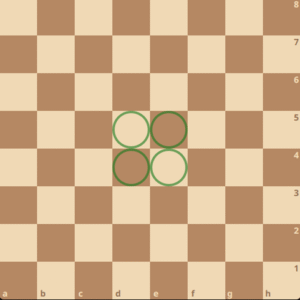
There is no single “center” in the board. But there is a region we can call the central area of the board. And this area consists of 4 squares – e4, e5, d4, d5.
The surrounding squares of these 4 squares – e4, e5, d4, d5 – are considered the central area as well. Those are c3, c4, c5, c6, d6, e6, f6, f5, f4, f3, e3, and d3.
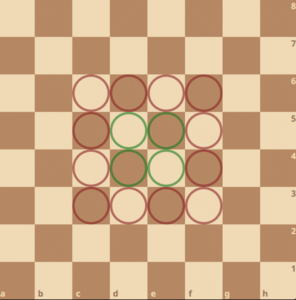
You can call all these 16 squares the part of the central area.
But the core among these is the green-marked squares. You will strike to those right from the very first move of the game.
The central squares – specially the core – are considered good squares for pieces. It limits the opponents’ ability to place pieces wherever they want.
Your pieces are more active in the central squares than anywhere else on the board. You can have more control and flexibility once you have the control of the center.
Let’s take a bishop to make more sense of this.
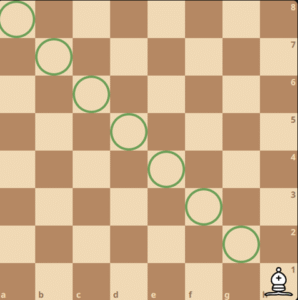
This white bishop controls the diagonal from g2 to a8. This diagonal consists of seven squares. What I am trying to say is that a bishop placed on the corner of the board controls seven squares.
Now, if you move the piece one step closer to the center – i.e. to g2 – you will notice the difference. The same piece now controls two more squares than it did when it was on the corner.
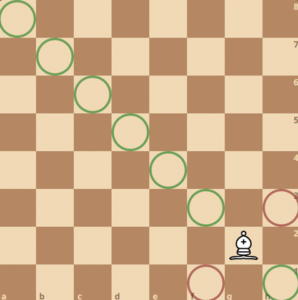
It now attacks nine squares. The number will become eleven if you move the bishop to f3 – one more step closer to the center.
The more squares a piece attacks, the more active it is. So, you get the idea – the bishop is getting stronger as it moving towards the core.
When you place a bishop in one of four core central squares – it then sees 13 squares in total – the most a bishop can on the board.
Therefore, controlling the center means controlling the game.
Develop Your Pieces
Developing pieces is essentially placing your pieces somewhere on the board, where it is more active than its original position. Once again, your goal is to make the bad pieces into good ones. This is very similar to what we have learnt so far in this article. Developing your pieces as early as possible is another key aspect of the game.
You see, the starting position of a chess game is just that – the starting position. It’s like all racers are standing in on line just before a race begins. Some may wish if they could start the race 50 meters ahead of the starting line. That is development of your position.
Back to chess. Pay your valuable attention to the white knight below.
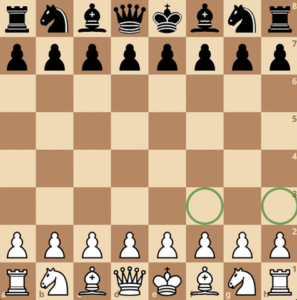
This knight stares at only two squares in its starting position. As soon as you place it on f3 – but not h3 – the very same knight controls five squares in total.
What’s more important here is that two of them are the squares from the core. And by know, you know the importance of controlling the center.
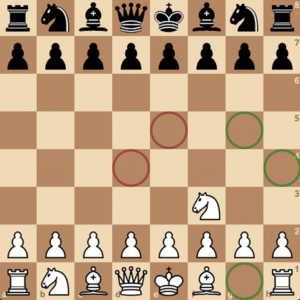
Try to develop your minor pieces – bishops, and knights – first along with the pawns. The early development knights and bishops helps to castle quickly.
This is not limited to knights only. It is very true for the rest of the pieces as well – even the king can be developed as well.
Ensure Your King’s Safety
The king is the central character of a chess game. The entire game revolves around it. If your opponent fails to protect their king – they lose. So, ensuring your king’s safety from attacks is compulsory.
King can move only by only one square at a time. It has no other special moves. This makes to attack the king easier compared to other pieces. On top of that, if a king is in the center of the board – not necessarily on the core – the king becomes the most vulnerable piece on the board.
But what is the way to do it?
It’s simple – just castle.
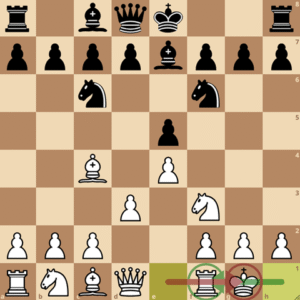
Castling is the most efficient way for securing a place for the king.
You can see in the example above – white castled very early in the game. Its king is now protected like a baby – surrounded by other pieces. White can now initiate an attack on the black king.
Many people suggest to castle early and they are correct to some extent.
For the most of the beginners – almost all – they find themselves in a situation where early castling helps them improving their position. They can achieve the goal castling by that.
But sometimes castling may cost you materials – or the game.
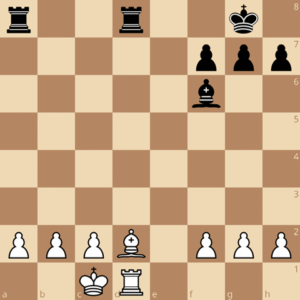
In this example, white castled queenside – and clearly some trouble is awaiting. Black’s rook on a8 about to capture the pawn on a2. Along with the black bishop white has some serious trouble to face. So, there exists exceptions
Castling is the most prominent way to keep your king safe. But you must keep the current position in mind. Therefor, castling early is a good advice – but not always. That is why I like to call it Ensure Your King’s Safety.
Don’t Bring Your Queen Early in the Game
Queen is the most powerful piece in chess. It is worth 9 points of material. This piece is powerful but also vulnerable.
Let’s see something that most beginners love to do – the early queen attack.
It is something like the example below.
They try to win the game in quick succession by bringing out the queen – literally on the second move.
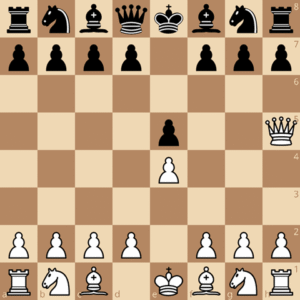
But what is the big deal about bringing the boss out early?
Let’s understand it slowly and steadily.
You opponent won’t just sit back and enjoy the defeat, will they? They will attack your queen right away. Capturing queen will buy them a significant advantage in the game.
Black plays 2…g6 to attack the queen. 3.Qf3 queen retrieves – this is already a messy position for white.
Black develops its knight by playing 3…Nc6. White tries to continue trying to checkmate real quick – 4.Bc4. Both white’s Queen and Bishop are staring at the pawn at f7. Black protects it by developing its other knight by moving it to f6.
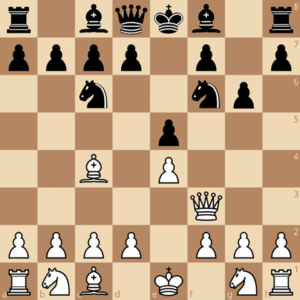
This fight ends up in a position like this. I want you to look at this position and think what has gone wrong here for white.
Notice black has developed two of its minor pieces – while white could only for one. White brought out the queen in attempt to win the game very early. In doing so, black continuously kept attacking the queen and – as a result – did far better in development compared to white.
What I am trying to convince is that early queen moves in the opening effects your development. You try to protect your queen and your opponent makes a development move in the meantime. Here you both lost a move and the development – what we call a tempo.
A wise man would never bring out his queen to early in the game – excluding certain openings of course. He would rather focus on development and king’s safety.
Don’t Move a Piece Twice in the Opening
The first 5 to 15 moves – i.e. the opening – are very crucial. You must gain as much space as possible. And you should send as much pieces as possible to the central area – specially the minor ones. The more pieces in the center – the more in control you are in the game.
This is quite similar to the previous principle – about the early queen moves. You lose tempo – or simply time.
You should build your shield in the openings. So, time is important in this phase of the game.
But sometimes you may need to move a piece twice or even thrice in the opening in certain variations. That is fine. You know what you are doing. I am saying in general.
Just remember from this section as a beginner is that moving a piece more than once is a bad idea.
Conclusion
Opening principles – or the fundamentals of chess openings – significantly help you in this particular part of the game. Beginners are often unaware of many opening theories. These foundations will give them the ability to play any openings in any unfamiliar situations. Besides, when you will learn some actual theories or variations – you will follow these steps as well. So, practice these with patience. I’ll see you next time.


